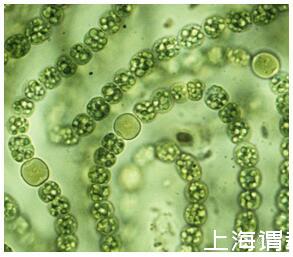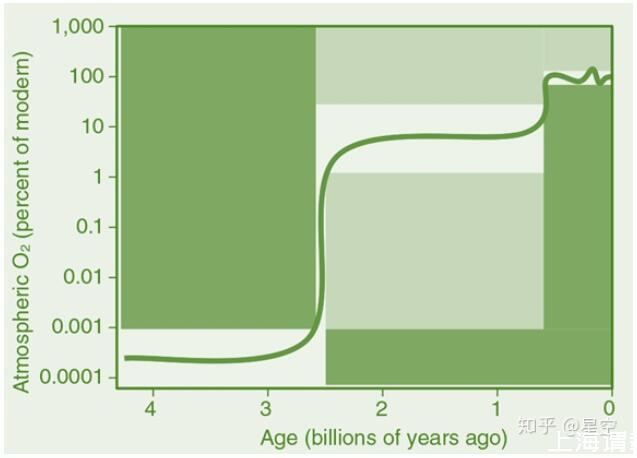热线:021-66110810,66110819
手机:13564362870


热线:021-66110810,66110819
手机:13564362870
当然是蓝藻(蓝细菌)啊,简直是当今地球生物圈的功臣!

蓝藻的三大贡献:
1.产氧光合作用
2.有氧固氮作用
3.二氧化碳浓缩机制
蓝藻的起源与爆发,导致了25亿年前的大氧化事件,逐渐将地球之初充满氨气、二氧化碳与甲烷的还原性大气变为以氮气氧气为主的氧化性大气,从而可以形成臭氧层。而当今最主要生产者的绿色植物,其叶绿体也是起源于蓝藻。

蓝藻几乎能在所有的陆地和水体生态系统发现,包括海洋、淡水、沙漠、极地。蓝藻在几乎所有的岩石生态系统(endolithic ecosystem)中几乎都能发现。蓝藻可以作为浮游的单细胞(planktonic cells)存在,也可以形成具有光合作用的生物膜(phototrophic biofilms)。一些蓝藻可以作为内共生体(endosymbionts)生存在地衣(lichens)、植物(plants)、原生生物(protists)、海绵(sponges)体内,通过光合作用为宿主提供能量,甚至有些生活在树懒的皮毛,作为树懒的伪装。病毒/噬菌体可以寄生在蓝藻细胞内,许多病毒含有光合作用基因,对蓝藻的生存具有重大影响。
蓝藻对于全球氧循环十分重要,蓝藻中的Prochlorococcus贡献了海洋中超过50%的光合作用。蓝藻很可能是地球上最成功的微生物类群,蓝藻具有大的遗传多样性,占据广阔的栖息地,在热泉、盐湖等极端环境均有发现,并在地球的碳循环和氮循环中具有十分重要的地位。蓝藻对于全球氮循环也十分重要,海洋蓝藻Trichodesmium固定的N2约占全球N2固定总量的42%。
蓝藻是原核生物!是原核生物!原核生物!属于细菌界,但是具有细胞分化能力!可以长成肉眼可见的个体,著名的食用发菜就是蓝藻,蓝藻是目前唯一可以为人类直接提供食物的原核生物!

此外再说一个电极微生物,可以直接从低电势的电极获得电子用于还原二氧化碳从而进行自养生活,刷新了人类对于生命活动的认知界限!生命活动本质上就是电子传递链利用电势差而获得能量!

这是我本人所拍,一不小心抓拍到了两对牵手的情侣菌宝宝~
参考文献:
1 Hamilton,T.L.,Bryant,D.A.&Macalady,J.L.The role of biology in planetary evolution:cyanobacterial primary production in low‐oxygen Proterozoic oceans.Environmental Microbiology 18,325(2016).
2 De,l.R.A.,Grube,M.,Sancho,L.G.&Ascaso,C.Ultrastructural and genetic characteristics of endolithic cyanobacterial biofilms colonizing Antarctic granite rocks.Fems Microbiology Ecology 59,386-395(2007).
3 Stewart,I.&Falconer,I.R.Cyanobacteria and cyanobacterial toxins.Schools&Disciplines(2008).
4 Berman-Frank,I.,Lundgren,P.&Falkowski,P.Nitrogen fixation and photosynthetic oxygen evolution in cyanobacteria.Res.Microbiol.154,157-164(2003).
5 Vothknecht,U.C.&Westhoff,P.Biogenesis and origin of thylakoid membranes.Biochim.Biophys.Acta 1541,91(2001).
6 Urbach,E.,Robertson,D.L.&Chisholm,S.W.Multiple evolutionary origins of prochlorophytes within the cyanobacterial radiation.Nature 355,267-270(1992).
7 Och,L.M.&Shields-Zhou,G.A.The Neoproterozoic oxygenation event:Environmental perturbations and biogeochemical cycling.Earth-Sci.Rev.110,26-57(2012).
8 Vermaas,W.F.Photosynthesis and Respiration in Cyanobacteria.(John Wiley&Sons,Ltd,2001).
9 Bocchi,S.&Malgioglio,A.Azolla-Anabaena as a biofertilizer for rice paddy fields in the Po Valley,a temperate rice area in northern Italy.International Journal of Agronomy,2010,(2010-5-13)2010,1353-1360(2010).
10 Keeling,P.J.The number,speed,and impact of plastid endosymbioses in eukaryotic evolution.Annu.Rev.Plant Biol.64,583-607(2013).
11 Price,D.C.&Bhattacharya,D.Cyanophora paradoxa genome elucidates origin of photosynthesis in algae and plants.Science 335,843(2012).
12 Howe,C.J.,Barbrook,A.C.,Nisbet,R.E.R.,Lockhart,P.J.&Larkum,A.W.D.The origin of plastids.Philosophical Transactions of the Royal Society of London 363,2675-2685(2008).
13 Archibald,J.M.Genomic perspectives on the birth and spread of plastids.Proceedings of the National Academy of Sciences of the United States of America 112,10147(2015).
14 Blankenship,R.E.Early Evolution of Photosynthesis.Precambrian Res.154,434-438(2010).
15 Rockwell,N.C.,Lagarias,J.C.&Bhattacharya,D.Primary endosymbiosis and the evolution of light and oxygen sensing in photosynthetic eukaryotes.Frontiers in Ecology&Evolution 2,66(2014).
16 Cavalier-Smith,T.Membrane heredity and early chloroplast evolution.Trends Plant Sci.5,174-182(2000).
17 Archibald,J.M.The puzzle of plastid evolution.Current Biology Cb 19,81-88(2009).
18 Riding,R.The term stromatolite:towards an essential definition.Lethaia 32,321-330(2010).
19 Garwood,R.Patterns In Palaeontology:The first 3 billion years of evolution.(2012).
20 Schirrmeister,B.E.,Gugger,M.&Pcj,D.Cyanobacteria and the Great Oxidation Event:evidence from genes and fossils.Palaeontology 58,769(2015).